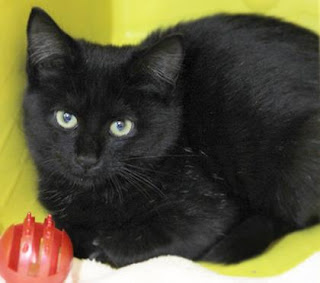Sometimes mindfulness is simply listening to your inner knowing.
In January 2016, I adopted a black feral kitten. Roo (short for Roisin, meaning “Rose,” and pronounced “Roo-sheen”) was five months old. She’d been feral until she’d been four months old.
This made her at best a difficult kitten to socialize. Feral kittens get socialized to learn what is safe and what isn’t during the their early months. Any unfamiliar experience can activate their desire to find safety. After two months of age, feral kittens are considered much more difficult to socialize. Many rescue organizations recommend that feral kittens four months or older be trapped, spayed or neutered, and released.
I was looking for a companion for my three-year-old black cat, Pangur, and I visited the web site of the shelter where Roo was living. I wanted a different colored cat, like a tabby or gray tuxedo. I wanted an older, less adoptable cat. One day, though, I noticed that Roo had been there for a month. Something switched on inside me, and I said aloud, “That’s it. I’m adopting her.”
I looked at the clock. The shelter opened in ten minutes. I got into my car with a cat carrier and drove there. All the way there, I argued with myself. What happened to the tabby, to the older cat? This was surely a very feral kitten. Was I acting impulsively? I kept driving, even though I felt like a lunatic.
I got there and visited with the kitten, who mostly hid from me. I decided that I had to hear one purr, even if it was tiny. I needed some confirmation of my intuition. After half-an-hour, I was ready to give up when I heard it, an infinitesimal vibration in her throat. “Do it!” intuition shouted, and I was mindful enough to listen.
Now, eight weeks later, I’m so glad I did. It’s been a process. She still runs away from me when she’s in active mode (since she’s a kitten, that’s often), but at night she sleeps next to me, and when she’s drowsy, she loves to be petted. She even lets me rub her belly, which to many is the ultimate sign of trust.
The best part of the story, though, is that my three-year-old cat, Pangur (another black cat) and Roo are inseparable. They play together, groom each other, and sleep together.
And when I look at this beautiful kitten, I remember how clearly intuition spoke to me and how mindfully I listened. Every time I see her, Roo serves as a reminder that the voice inside will never fail me.
Note: If you would like to adopt a feral kitten, here are some suggestions from Alley Cat Allies.
